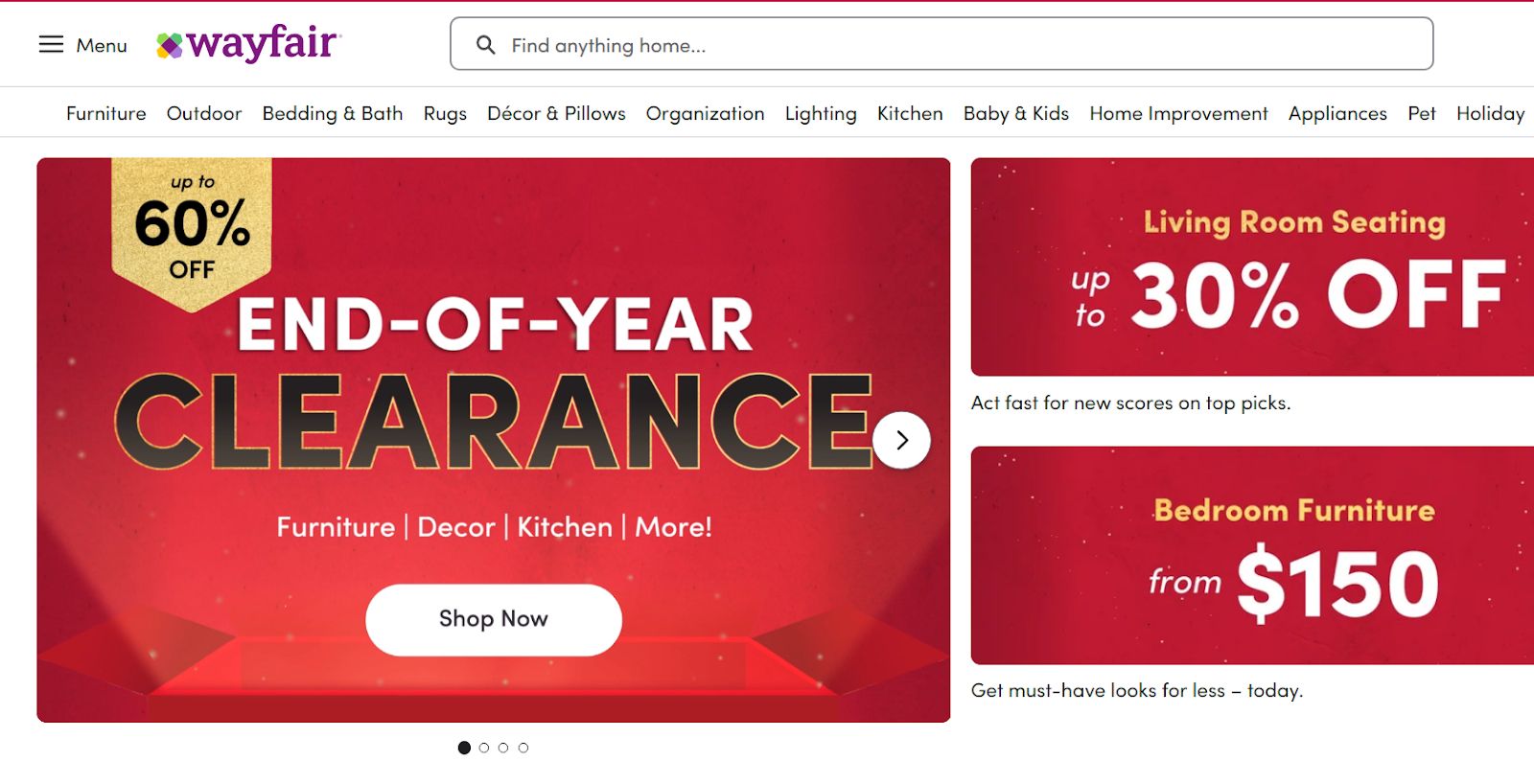The field of ecommerce can be incredibly lucrative — when done right.
There’s a huge range of areas to consider when creating a successful ecommerce store, including SEO, advertising, and content marketing.
However, one of the most important areas to examine to improve your ecommerce store’s performance is user experience.
After all, online shopping is only as successful as it is convenient, so the user’s interactions with your website should be as streamlined and easy-to-use as possible.
Keep reading to learn the essential ecommerce UX best practices you need to know.
- Ecommerce UX Best Practices
- Final Thoughts: UX Ecommerce Best Practices To Make Your Store More Successful
Ecommerce UX Best Practices
- Make Navigation Intuitive
- Call Out Special Product Offers and Sales
- Consider Visual Appeal
- Optimize Your CTAs
- Simplify Your Checkout Process
- Make Product Descriptions Thorough
Let’s look at these ecommerce UX best practices in more detail.
Sell anything, anywhere online...
... with a host optimized for ecommerce
1. Make Navigation Intuitive
Shoppers often come to your website with a mission. Your website should help them find what they’re looking for as quickly as possible, or you risk them clicking away in frustration.
To make your navigation as intuitive as possible, follow standard conventions for website formatting. That means breaking your products down into clear categories and ensuring each page maintains a clear visual hierarchy. Also, include links to your social media profiles.
One of the largest ecommerce marketplaces, Etsy, offers upfront a clear list of product categories. This arrangement is especially successful because the user doesn’t have to click any buttons or hover to see categories — they’re all there from the beginning.
That style may not work for every type of ecommerce store, but it underscores how simplicity and utility win user experience.

If you haven’t already, it’s critical to include a search bar, preferably with search filtering features.
Navigation is essential on the home page, but it’s also important for every page after. That’s why you should use breadcrumbs or a roadmap displaying the user’s current position in relation to the home page.

Breadcrumbs are an ecommerce user experience best practice because they help users orient themselves in a website and encourage more browsing, and therefore more sales.
2. Call Out Special Product Offers and Sales
Especially as consumers are more concerned about value than ever, offering discounts can drive conversions and build loyalty.
Don’t bury sales under navigation categories. A banner or ad at the beginning of your ecommerce site that grabs the user’s attention gets them to click and spend more time on your online store, reducing your bounce rate.

Use large text and bright colors to call attention to your deals, and word the offer so that it’s immediately clear what value the user stands to gain.
3. Consider Visual Appeal
While you want your website to be attractive, the ecommerce UX best practice is not to overwhelm your audience with design elements. The website design should be simple and attractive.
Research-based user experience group Nielson Norman lays out the following UX design principles for an excellent website:
- Scale: Communicate importance with size.
- Visual hierarchy: Use scale, color, and text to guide the eye in an intended order.
- Balance: Arrange elements with visually pleasing symmetry or asymmetry.
- Contrast: Communicate differences with visual disparity.
- Gestalt: Place contextually related elements closer together.
There are many ways to optimize visual appeal, but the bottom line for your ecommerce website is to prioritize simplicity and ease of use.
Finally, invest in high-quality photographs and product images. Even the slightest bit of pixelation or fuzz can lower your website's perceived trustworthiness and quality.
4. Optimize Your CTAs
Your calls to action (CTA) are the smallest text on the page and the most critical. You want to make sure they’re persuasive and compelling from a sales standpoint.
From a customer experience standpoint, it’s important that your users know exactly what clicking the button will do. They should inspire trust along with the action.

So make your CTAs specific, and overcome potential objections (“it’s free,” “no credit card required,” “takes just minutes”). Social proof, like positive ratings or customer reviews near your CTA, can also help convert.
It is an ecommerce UX best practice to test various locations, headers, and copy to find the CTAs with the best conversion rates with your target audience.
5. Simplify Your Checkout Process
For your customers, shopping is the fun part — and paying less so. Once your user clicks “add to cart,” it’s important to make the checkout process as simple as possible.
24% of users abandon their shopping carts because they were required to create an account, so allow users to check out as a guest.

Other things that cause cart abandonment are surprise fees, high shipping costs, and searching for better prices. Be as transparent as possible about your pricing upfront, and make discount code boxes less noticeable.
6. Make Product Descriptions Thorough
It’s an ecommerce UX best practice to consider the buyer’s perspective when writing product copy. They want to feel confident in the decision they’re about to make.
You don’t want them to need to leave your website for more information, as there’s a good chance they won’t come back. So, provide all the information they may need on the product page to make a purchase decision.

Although your focus shouldn’t be on persuasion, you can use subtle sales tactics like free shipping over a certain amount.
Final Thoughts: UX Ecommerce Best Practices To Make Your Store More Successful
With an emphasis on making your customer’s journey pleasant as possible, your ecommerce business is sure to thrive.
Make sure to follow the ecommerce user experience best practices — make your navigation intuitive, call attention to sales, make it visually pleasing, optimize CTAs, simplify the checkout process, and craft thorough product descriptions.
If you’re new to ecommerce, you'll need to know how to build an ecommerce website. You'll also want a high-performance host that's optimized for ecommerce.
Check out Nexcess Managed WooCommerce to get started today.

